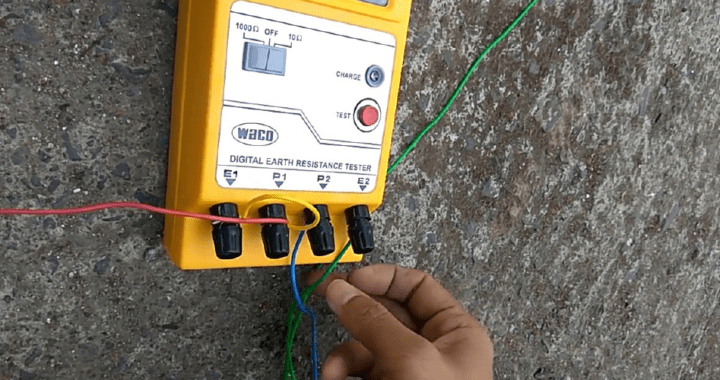What is Earth Resistance?
The resistance of the earth electrode to the current flow into the earth is known as earth resistance. The resistance between the earth and the earthing plate is measured through a potential fall method.
Numerically, it is equivalent to the ratio of the earth electrode potential to the current disappeared by it. The resistance between the earthing plate and the earth is assessed through the potential fall method.
The earthing resistance value is based upon the soil resistivity, construction design, and climate-related conditions. Moisture in soil plays a critical role in the resistivity of the soil. Different types of codes indicate the desired value of an earthing system.
Acceptable Earth Resistance Value in India
The acceptable earthing resistance value in India is are follows:-
US AID | Earthing Practices of India by MVS Brinch
| (1) Earth Resistance of Power Station | 0.5 ohms |
| (2) Earth Resistance of EHT Sub-station | 1.0 ohms |
| (3) Earth Resistance of 33 KV Stations | 2.0 ohms |
| (4) Earth Resistance of D/t Structure | 5.0 ohms |
| (5) Tower Foot Resistance | 10.0 ohms |
Chapter 4 of IEEE standard 142-2007
| Resistance suitable for industrial plant
Sub-stations, buildings & large installations |
1 ohm to 5 ohms |
IS 2309: 1989, Cl 12.3.1 Page 32 and BS 7430:1998
| Cl 9.4.3 Lightning arrestors earth resistance for Protection of allied structures & buildings |
10 ohms |
Guide to control Undesirable Static Electricity
| Lightning arrestors earth resistance for Protection Of allied structures and buildings |
10 ohms |
IS 2689:1989, Table 4 page 28 (Reaffirmed March 2010)
| Lightning arrestors eath resistance for Protection of buildings and allied structures |
10 ohms |






